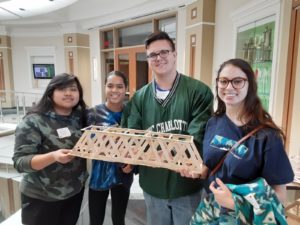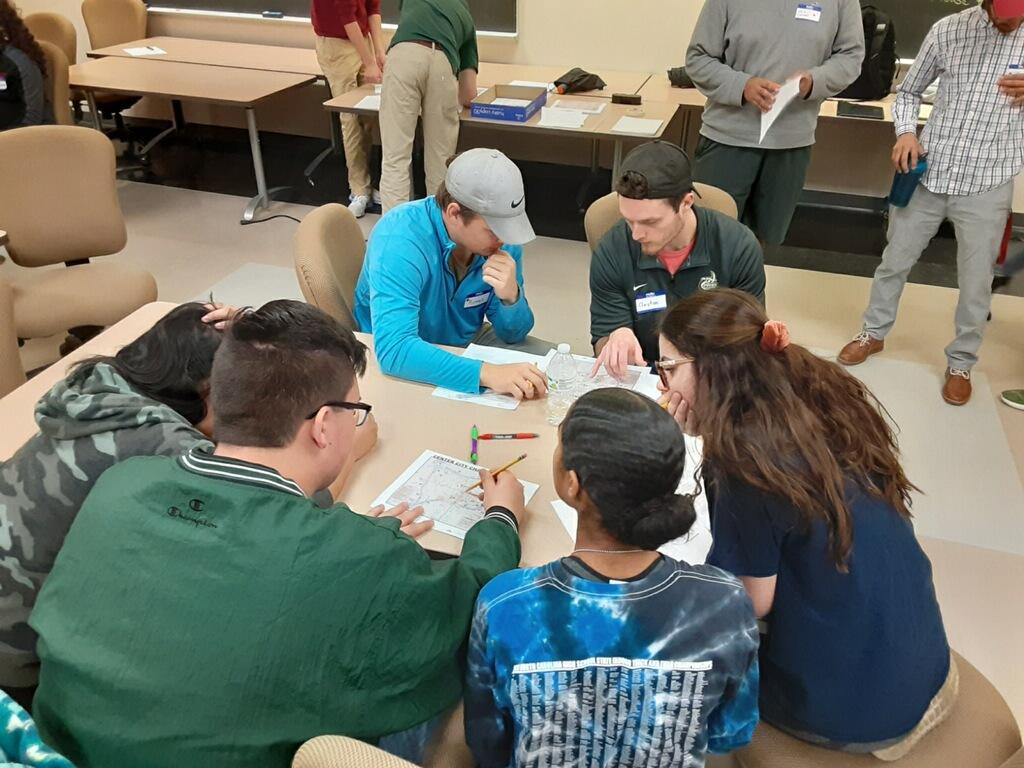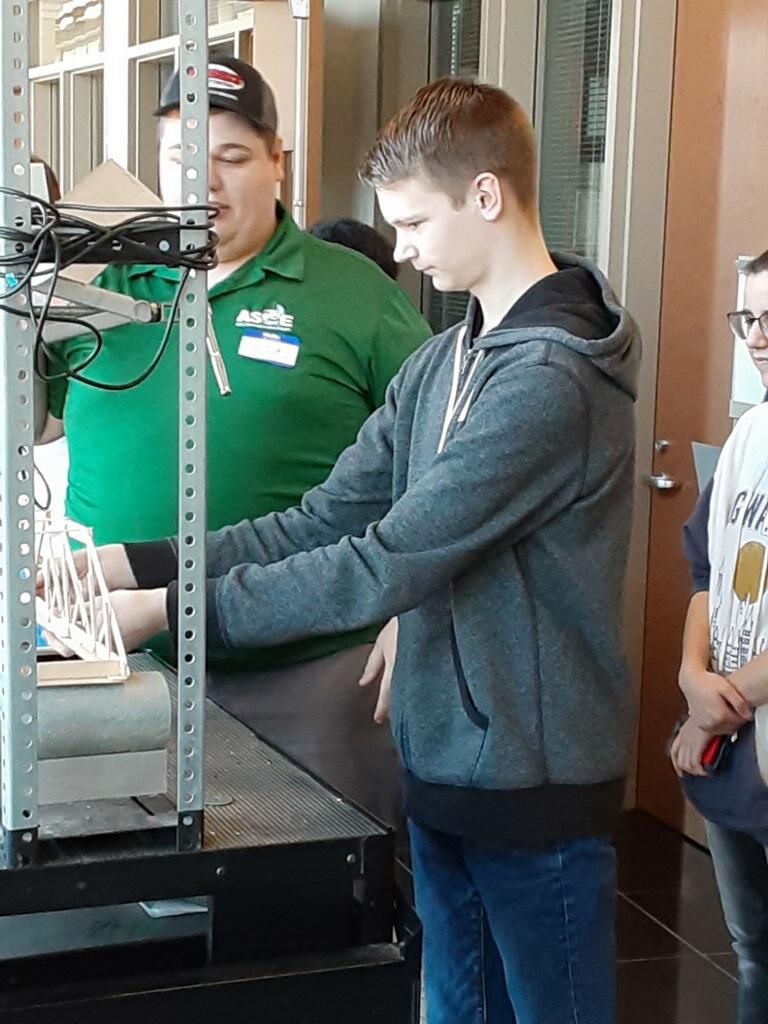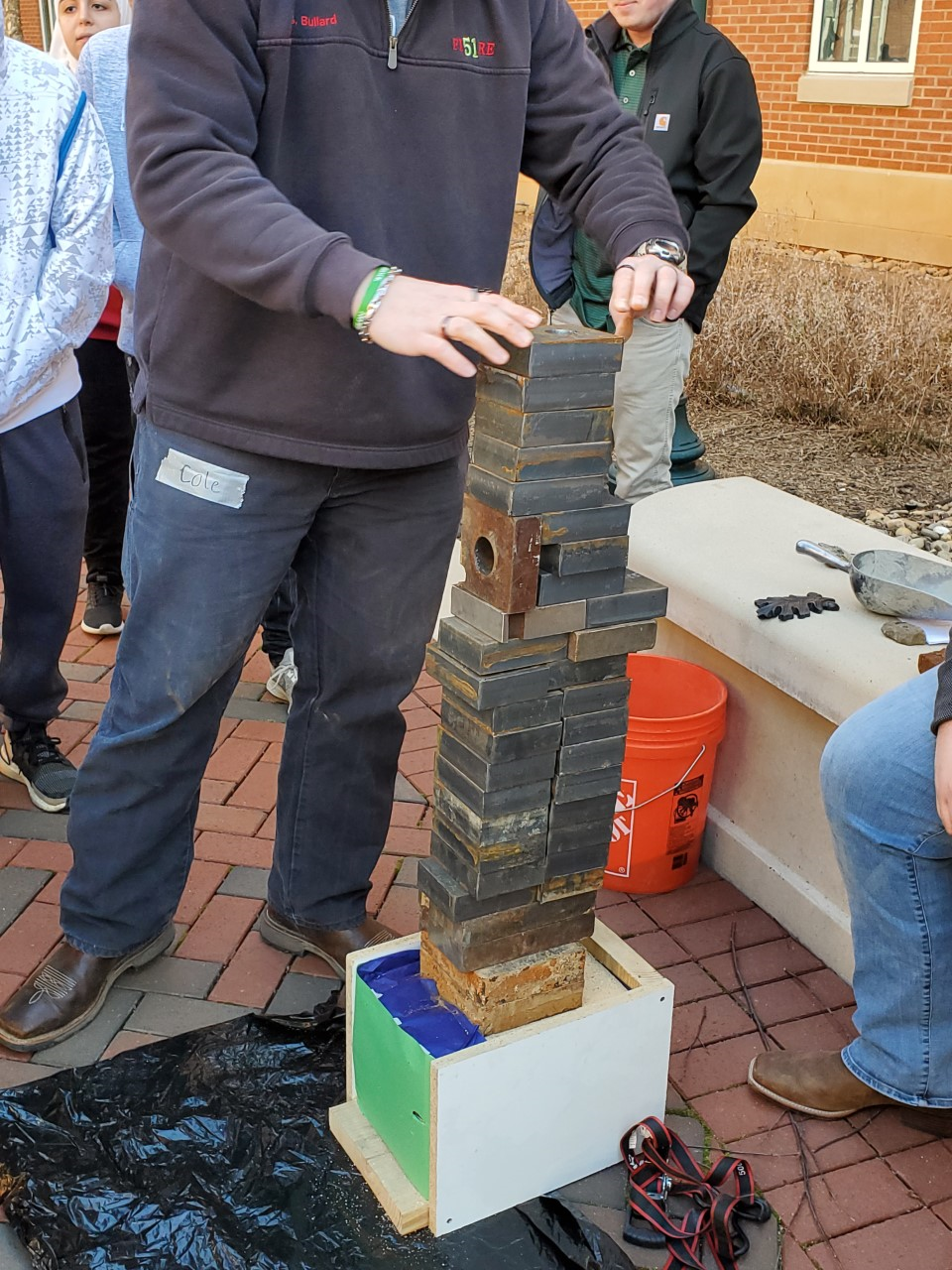CATA Students Shine at UNCC Mini Civil Engineering Conference

For the third straight year, CATA and UCPS is making a name for ourselves!!!! We have had the tradition of winning half of all of the awards presented in the competition with the top 3 places awarded in each category. This year is no exception! All (6) of the certificates earned today are hanging on the wall in my classroom, along with previous year awards. We have won a total of 24 awards in the (3) years.
The following are the results of the 3rd annual competition:
- Structural – 1st & 3rd
- Geotechnical – 1st & 2nd
- Environmental – 1st
- Transportation – 1st
Back story – For each year, I have taken the students from the PLTW Principles of Engineering course to compete. In the class, the 11th graders learn the basics of structural engineering, specifically statics – the study of forces reacting on an object. For the structural event, the students study bridges and are challenged to design and build a truss bridge using only popsicle sticks and glue weighing no more than 250g. The winning team’s bridge held over 350 pounds – “Quite impressive” to quote a grad student running the event.
For the transportation event, students are challenged to use determine various forms of transportation to find the most economical means to transport passengers across Charlotte. This is using skills learned in Math, engineering, and even English (word problems).
For the Geotechnical, students are challenged to design an earthen structure to withhold weight. They are given a 5 sided box (no top), challenged to fill the box with dry compacted sand and limited office supplies that not only support its own weight when a side of the box is removed, but challenged to see how much weight can be added on top before the side collapses. The winning team’s design and construction held over 350 pounds.
For the Environmental event, students are challenged to take a water mixture that simulates wastewater and design a filter to remove particles and odor from the water. This is directly using skills students learn in environmental science, physics and math. Student designs are judged on the amount of water that passes through their filter, the clarity of the water and the amount of time it takes. This project is almost the same challenge that is the Engineering Design and Development class the students will take their senior year.
Keep up the great work!



